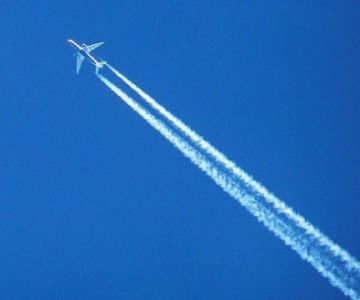
Monday, September 7, 2009
The plane industry - introduction

Sunday, September 6, 2009
Early aircraft production
After the wright brothers success at kittyhawk
, north Carolina , America ,
they tried to sell their flying design to government's. But government's didn't buy the design as they didn't know how it worked. But in 1908 the wrights won a contract to build planes for the American army ,they lisecned patents to a french company to make their planes too.
the outbreak of the great war led to massive
plane production in Europe. By 1914 the fr
ench had built 2000 planes and the Germans 1000. America hadn't produced the multitude of planes produced in Europe . University's and research labs in America researched new ways of making planes . In 1930 planes started to be made from metal and not wood.

 (http://www.wired.com/images/article/full/2007/12/douglas_dc_3_630x.jpg)
(http://www.wired.com/images/article/full/2007/12/douglas_dc_3_630x.jpg)
Germany and Britain made the biggest bombers but America made better bombers and they could mass produce them better then anyone else. Europeans invented new resources such as the jet engine, better nav aids and radar. but during the wa
r the Europeans used less aircraft more effectively.
After the war aircraft mass production stopped. From then on research was more important than mass production to the euro peons and the Americans. It was clear though that during the war years the Europeans led the development and research into new planes.
More info on ww11 aircraft production :http://www.world-war-2-planes.com/american-world-war-2-planes.html
For a fascinating video about the wright brothers first flight :http://www.history.com/video.do?name=science&bcpid=1681694258&bclid=1672079625&bctid=1478148523
http://www.world-war-2-planes.com/images/mustang_gr_500.jpg

Wednesday, July 1, 2009
Airbus - A Global company

(http://www.jetphotos.net/profiles/a/AirbusLogoLarge2small.jpg.36078.jpg)
Airbus is one of the leading aircraft manufactures in the world. Based in Toulouse France , airbus produces roughly half of the worlds planes. Airbus has many sites all around Europe and the world. It employs 57000 people at sites in the UK , Spain , France and Germany . Parts are made at these sites and taken to final production sites in Toulouse France , hamburg (Germany) and Seville (Spain). Airbuses wide range of plane models include the a300 , A310 , A319 , A320 , 321 ,A330 , A340 . Airbuses newest plane the Airbus a380 is the largest plane in the world - in this blog we will explore how airbus built parts of this plane all over Europe and took these parts all together to make this mighty flying machine.
(http://www.scanliners.com/Serie100/Box103/10368.jpg)
The airbus a380 is the biggest passenger airliner in the world.it made its maiden flight on 27 April. At full capacity it can seat 853 peolpe. It has a range of 15,200 Km this is enough to fly from
Broughton -
Saint Nazaire -
Puerto Real - Spain toulouse
Buxtehude - Germany - Buxetehude is responsible for the the Cabin Intercommunication Data System, the Passenger Service Unit Channel, the complete Cabin Interior Lighting Package (about 1000 illumination components per ship set) and for the control computers of the water/waste system.
Nordenham – Germany - For the A380, the plant is producing fuselage shells for the forward and aft, or rear, fuselage sections of the aircraft, as well as the fuselage shell of the upper deck central section.
Stade –
Laupheim –
Friday, June 26, 2009

Tuesday, May 26, 2009
How Planes Navigate
Cruise altitude between FL330 and FL330
EGKK (0.0nm) -SID-> BOGNA (26.9nm) -UN615-> BENBO (44.9nm) -UN615->
HAWKE (50.5nm) -UN615-> XAMAB (62.7nm) -UL612-> VEULE (87.7nm) -UL612->
INPAX (122.3nm) -UL612-> RESMI (186.6nm) -UM975-> PEKIM (217.3nm) -UM975->
PILUL (231.9nm) -UM975-> PIMUP (267.3nm) -UM975-> PIXIS (306.3nm) -UY612->
PODEP (324.6nm) -UL612-> MOKIP (374.5nm) -UL612-> MILPA (408.3nm) -UM135->
GVA (419.2nm) -UM135-> MOBLO (455.4nm) -UM135-> VEROB (497.1nm) -UM135->
TOP (527.0nm) -UL50-> NEDED (545.3nm) -UL50-> LAGEN (569.0nm) -UL50->
ANAKI (584.1nm) -UL50-> IXITO (589.3nm) -UL50-> UNITA (604.2nm) -UL50->
KAFEE (615.5nm) -UL50-> KONER (638.5nm) -UL50-> MAURO (663.1nm) -UL50->
ELB (698.5nm) -UM729-> GILIO (730.6nm) -STAR-> LIRF (798.3nm) (NOTE: the numbers and letters UM 729 etc refer to routeways or highways in the skies. SID stands for standard instrumnet departure meaning a pathway out of the airport on to the flightplan and STAR refers to standard terminal arrival route defines a pathway into an airport from the airway.)Tuesday, April 28, 2009
Benefits of The aviation industry
- 780,000 people work in manufacturing aircraft , frames and engines etc.
- 2.0 million people work for airlines as handling agents , pilots , flight crew , check in staff and maintenance staff
- 380,000 people employed in airport security , air traffic control , airport management .
- 2.3 million have other jobs in airports such as hotels , restaurants , duty free , shops

Sunday, March 1, 2009
Air transport and the Enviroment
Planes release carbon dioxide into the atmosphere. This is leading to global warming .
Aircraft contribute to climate change in four ways:
- Carbon dioxide - this is the most significant gas produced from in flight aircraft.
- Oxides of nitrogen - this gas is only produced by planes flying at very high altitudes.
- Water vapour - large aircraft produce water vapour at high altitudes. These trail behind to form contrails or condensation trails
- Particulates
Air transport contributes 2 percent of global warming. This could reach 3 percent by 2050. The aviation industry is working towards a carbon neutral growth. New planes entering today's fleet are 70 percent more fuel efficient then planes 40 yrs ago. The A380 consume 3 litres per passenger per 100km.Also new aircraft are 75 per cent quieter then planes 40 years ago. In the future air travel will become cleaner , quieter and of course greener.
(http://upload.wikimedia.org/wikipedia/commons/8/85/Contrails.jpg)
